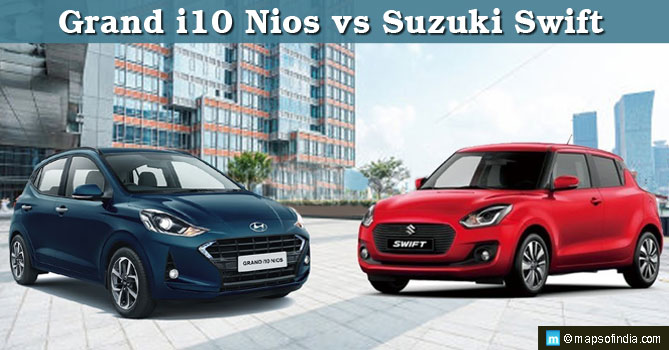Hyundai Grand i10 Nios and Maruti Suzuki Swift are the hatchback cars and gives a tough competition to each other in the Indian auto industry.
Car Comparison | Suzuki Swift Vs Grand i10 Nios; Which One is Your Favourite Suzuki Swift Vs Grand i10 Nios

